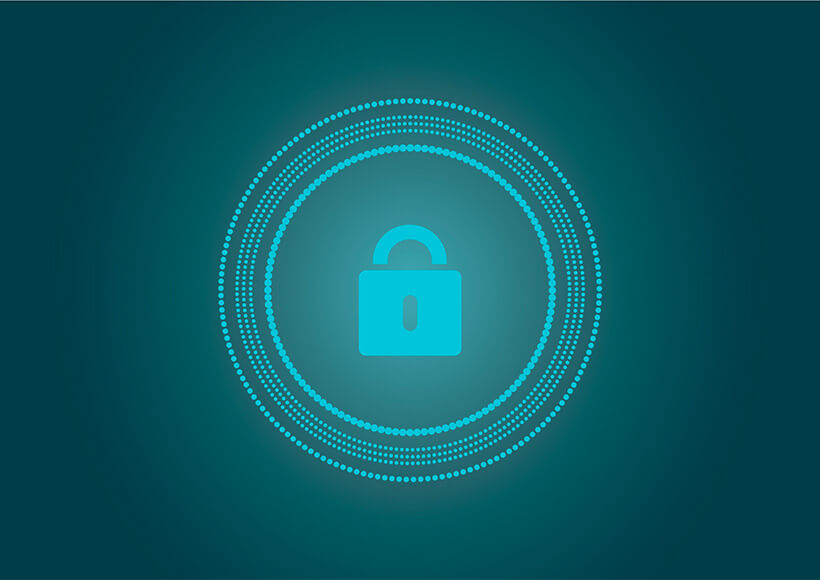The use of technology is increasing in the criminal justice landscape. This is slowly receiving attention from academic research in the new field of digital criminology. This transformation raises unexplored moral and ethical dilemmas.
There is an inevitability that technology will play a major role in the delivery of services in our prisons. Technology is not neutral- its impact has social, psychological, political and economic implications for our prisons. We are mindful of this and we can make some valuable suggestions about how technology is implemented. We believe that technology, if managed sensitively, can help the rehabilitative enterprise.
Why should we use technology in our prisons?
The prison landscape is a peculiar one and the use of imprisonment for criminologists is a complex debate. Our prisons are institutions organised by power, control and order and the project of incarceration deliberately deprives offenders of not only their freedom but of autonomy, relationships and citizenship.
This is the landscape in which we are dealing with and assumptions about the impact technology can have, does indeed require attention. Therefore, discussions about citizen rights and technology have, in the prison landscape, a distinctive meaning.
Prisoners’ rights, choice and autonomy are heavily regulated and the consequences of this kind of deprivation are widely acknowledged. In doing so the debate to introduce technology to prison contexts has to rightly consider the harms it may create. These are the ethical dilemmas we face.
In many instances, technology is not the solution but equally it can be the best solution. Balancing these benefits and risks is something we need to be mindful of. However, further extending harm to the prisoner experience should not be an unintended consequence of digital transformation. It should minimise harm and assist with rehabilitative outcomes.
We have a responsibility to prepare people in prison to survive in this tech-driven society and the question on how we use technology should be informed by ethical and moral principles.
After an Estonian prisoner opposed the fact that he didn’t have access to the internet, the European Court of Human Rights (ECtHR) has stated that denying a prisoner access to the Internet may amount to a violation of Article 10 of the European Convention of Human Rights (ECHR).
Although the Court considered that Article 10 of the Convention cannot be interpreted as imposing a general obligation to provide Internet access for prisoners the Court did stress that Internet access has increasingly been understood as a right. They recommend that effective policies are developed for Internet access and to overcome the “digital divide”. However, with rights comes responsibility.
The responsibility of privacy: the need for transparency
In the USA, the “State vs Loomis Case” related to the use of a risk assessment tool of offenders that deployed an algorithm (AI) to make sentencing decisions. In the case, it was outlined that a defendant deemed to be at high risk of recidivism was denied the possibility of parole and was handed down a six-year sentence.
The Wisconsin Supreme Court held that a trial court’s use of an algorithmic risk assessment in sentencing did not violate the defendant’s rights even though the methodology used to produce the assessment was not disclosed to the court nor to the defendant.
The court placed trust and confidence in the algorithm despite the actors in the justice system having limited visibility of the algorithm’s reasoning. This case highlights a need to understand ethical and moral reasoning and we wonder if at all a machine can be ethical in its labour.
Most pleasingly though, in December 2018, the European Commission for the Efficiency of Justice (CEPEJ) published a European Ethical Charter on the use of Artificial Intelligence in judicial systems and their environment.
We welcome this, however, a point we wish to labour is that frameworks, policy and guidance need to be context-specific, with the prison and its people in mind. This is the challenge moving forward. As Hildebrandt (2015) suggests in her work on smart technologies and law, we need to reconsider how we do things now. She suggests what has gone before needs a complete overhaul.
The old rules and laws need rewriting with technology in mind. Her message for us is clear and we would propose that the digital transformation in prisons demands a revised and bespoke approach. All rules, policy and guidance have to include digital behaviour. The digital transformation is in its infancy and there is an opportunity to get this right now.
Developing ethical principles for digital rehabilitation in prisons
In 1764, the Italian philosopher Cesare Beccaria described his vision to eliminate the foundations of the criminal justice practices of the ancient regime and move towards an ethical and moral one. So, by drawing on his principles, we want to highlight what aspects demand the development of an ethical and moral framework.
- The principle of legality
The act of imprisonment is a legal one – it removes and deprives prisoners of specific rights. Extending the AI enterprise to the prison landscape could compromise a prisoner’s progression and deny equal opportunities to rehabilitate.
Denying, limiting and depriving rehabilitative opportunities could be a matter for further litigation. If technology is used to make these assessments what rights do prisoners have in claiming an understanding of this decision-making?
Moreover, in the advent of email services for prisoners what rights do they have to keep and retain these interactions once they leave the prison? Designing these processes demands a legal perspective that fully considers the rights and the need to reduce harm in these settings. Moreover, a secure grounding on what rights are for prisoners requires further thought in the light of digitization.
- The principle of publicity and transparency
Adding to the principle of legality, the need to make decision-making transparent is important. An environment where rules and regulations impact directly on the everyday life of the prisoner can be experienced as compromising and stifling.
Many prisoners talk about fairness and humanity when it comes to decision-making and the use of AI, for example, to make decisions and assess risk could have the potential to remove subjectivity. However, this is dependent on the methodology of the algorithm. And there is, of course, the danger of discrimination. Disclosing decision-making is crucial.
- The principle of proportionality
Prisons competently gather data about prisoners, painstakingly recording their behaviour, their visits, their achievements, and their breaches. The ‘power of the pen’ is a form of soft power that brings prisoners distinctive pains of incarceration (see Crewe, 2011). This level of surveillance is a key component to incarceration and technology can amplify the volume and frequency in which a prisoner can be monitored.
In a digital prison, every keystroke, searches, digital interaction made by the prisoner is permanently recorded. Collecting this data without constraints needs exploring. The proportionality of data collection should not be exhaustive and understanding the kinds of data machines can both collect and use should be given serious thought.
How long should data be kept for and can users (prisoners) request a record of their digital history? How far are prison organisations prepared to go in limiting and foregrounding the rights of the digital users?
The challenge is, of course, going to be determined by prison aims and objectives as well as broader justice agencies like the police and probation.
- The principle of equality and fairness
Knight (2016) identifies the prison as a ‘communication poor’ environment. Access to communicative technologies has historically been heavily regulated and controlled and this has social and emotional consequences on the serving prisoner. Hence, prisoners are a group who are subject to the digital divide in varying ways.
Selwyn (2003) helpfully explores this in his work on the use and non-use of technology. The question of access is not the only barrier as there are personal and organisational constraints to acquiring and maintaining digital competency. Digital transformation is challenging and many of these challenges perpetuate uneven access opportunities.
Disparities are not only identifiable across different jurisdictions across the globe but within single countries opportunities to access and use technology is a postal lottery. The right and freedom to use technology is hampered by many economic and political reasons in the wider community and this has amplified implications for the prison.
We need to begin to explore the kinds of digital competencies prisoners would benefit from; for example, working out what digital skills will enable a prisoner to flourish. This too is linked to the principle of legality as the prison obscures rights, it denies and limits them.
- The principle of agency
It is necessary that the implications of incarceration should not extend the harm beyond the convicted criminal. Families and friends are directly affected by incarceration and this also creates significant harm.
It is well documented that if prisoners can maintain healthy and functioning relationships with their family there are increased chances of resettlement and returning to prison is less likely. Technology, therefore, has an obvious role to play here. Face-to-face contact technology could increase contact such as email, telephone and video conferencing. This, however, is bittersweet for prisoners and their families.
Whilst increased opportunities to have regular contact are welcomed the cost of this to families is subject to some criticism. Services like these are not free. Some worry that the pricing structure is too high and typically many prisoners’ families belong to lower socio-economic groups and bearing these costs can contribute to on-going poverty.
The prison technology market is restricted, and prisoners and their families cannot shop around for the best deal – they either use the service implemented in the prison or they do not. In short, this closed market compromises choice. In doing so it can exacerbate harm to the prisoner and their family.
- The principle of normality
Achieving normality in prison is a challenge, achieving this with technology is also a challenge. However, technology can help prisoners undertake digital interactions that are mirrored in the outside world. Depriving them of maintaining digital competencies is essentially abnormal in a digital society. Managing their money, applying for jobs, interacting with family and friends are normal digital behaviours.
Digital is the new normal. Balancing these principles is a challenge but we hope that by exploring and thinking through these ethical and moral features development and implementation will both reduce harm and contribute to rehabilitative outcomes and that re-entry is least disruptive.
References
Crewe, B. (2011). Soft power in prison: Implications for staff–prisoner relationships, liberty and legitimacy. European Journal of Criminology, 8(6), 455-468.
Hildebrandt, M. (2015). Smart technologies and the end(s) of law: novel entanglements of law and technology. Edward Elgar Publishing.
Knight, V. (2016). Remote Control: Television in Prison. London. Palgrave Macmillan.
Selwyn, N. (2003). Apart from technology: understanding people’s non-use of information and communication technologies in everyday life. Technology in society, 25(1), pp.99-116.
//
Dr Victoria Knight, PhD, MA, BA (Hons), is a senior research fellow for the Community and Criminal Justice Division in the Faculty of Health and Life Sciences, De Montfort University. She has expertise and research experience across three core areas: digital technologies use in prisons, emotion and criminal justice and offender education. She is a member of the editorial board for the Prison Service Journal and Advancing Corrections Journal. Victoria has published her work on in-cell television: Remote Control – Television in Prison, Palgrave Macmillan, 2016. She has also extensively published on digital technologies in prisons.
Steven Van De Steene is an enterprise architect and an expert in technology for corrections. He works as a consultant in the area of innovation and technology strategy for prisons and probation services. Steven is not only a Board member of the International Corrections and Prisons Association (ICPA), but he is also the coordinator of its Technology Solutions Network. Until 2015 he has been the Belgian Prison Service’s IT Director.




